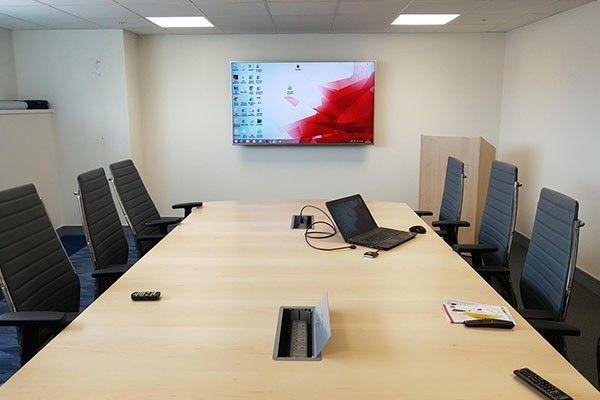In the ever-evolving landscape of business, strategic product development stands as a cornerstone for companies aiming not just to survive, but to thrive. The process of bringing a product from conception to market requires a delicate balance of creativity, market understanding, and meticulous planning. In this article, we delve into the art of strategic product development, exploring the key principles and approaches that contribute to the successful creation and launch of innovative products.
Understanding Market Needs and Trends
1.1 Market Research
Before embarking on any product development journey, thorough market research is essential. This involves identifying customer needs, analyzing trends, and evaluating competitors. A deep understanding of the market sets the foundation for creating a product that resonates with the target audience.
1.2 Trend Analysis
Trends in technology, consumer behavior, and societal shifts play a pivotal role in product development. Keeping a finger on the pulse of emerging trends allows companies to align their products with current and future market demands, staying ahead of the competition.
Defining Clear Objectives and Goals
2.1 Goal Alignment
Every product development endeavor should align with the overall strategic goals of the company. Clear objectives provide a roadmap, ensuring that the development process is purposeful and contributes to the company’s long-term success.
2.2 SMART Goals
Setting Specific, Measurable, Achievable, Relevant, and Time-bound (SMART) goals adds clarity to the development process. These goals serve as benchmarks, guiding the team toward successful product outcomes within defined parameters.
Cross-Functional Collaboration
3.1 Interdepartmental Communication
Product development is not confined to a single department. Successful projects often result from effective communication and collaboration between departments, including marketing, design, engineering, and sales.
3.2 Agile Methodology
Adopting agile methodologies promotes flexibility and adaptability throughout the development process. Regular cross-functional meetings, quick iterations, and continuous feedback loops enable teams to respond swiftly to changes and challenges.
Read more:
User-Centric Design
4.1 User Personas
Creating detailed user personas helps in understanding the needs, preferences, and pain points of the target audience. Designing products with the end user in mind enhances usability and satisfaction.
4.2 Prototyping and Testing
Prototyping allows for early testing of product concepts. Soliciting user feedback at this stage helps identify potential improvements, ensuring the final product meets user expectations and delivers value.
Innovation and Creativity
5.1 Encouraging Innovation
Fostering a culture of innovation within the development team encourages out-of-the-box thinking. Companies that prioritize and reward innovative ideas often yield groundbreaking products that disrupt markets.
5.2 Design Thinking
Applying design thinking principles involves empathy, ideation, and iteration. This human-centered approach guides product development by understanding user needs, generating creative solutions, and refining prototypes based on feedback.
Risk Management and Contingency Planning
6.1 Identifying Risks
Anticipating potential risks early in the product development process allows for proactive mitigation strategies. This includes technical challenges, market fluctuations, or unexpected competition.
6.2 Contingency Plans
Developing contingency plans provides a safety net for unforeseen circumstances. Having alternative strategies in place ensures that the project can adapt and move forward despite challenges.
Scalability and Future-Proofing
7.1 Scalable Architecture
Building a product with scalability in mind accommodates future growth. Scalable architecture ensures that the product can handle increased demand and additional features without a complete overhaul.
7.2 Future Trends Integration
Anticipating future trends and technologies enables companies to future-proof their products. Integrating flexible features allows for adaptation to evolving market needs and advancements.
Strategic Marketing and Launch Planning
8.1 Integrated Marketing Strategies
Aligning product development with marketing strategies ensures a seamless transition from creation to market presence. Integrated planning includes pre-launch, launch, and post-launch marketing activities.
8.2 Targeted Launch Campaigns
Tailoring launch campaigns to specific target audiences maximizes impact. Well-executed marketing strategies create awareness, generate interest, and drive adoption during the critical launch phase.
Feedback Analysis and Iterative Improvement
9.1 Post-Launch Feedback
Collecting and analyzing post-launch feedback is integral to product development. User reviews, market response, and performance metrics inform iterative improvements, enhancing the product over time.
9.2 Continuous Improvement
Product development is an ongoing process. Implementing a culture of continuous improvement ensures that the product remains competitive and aligns with evolving market demands.
Conclusion
Strategic product development is not a linear process but an intricate dance of creativity, adaptability, and market awareness. By understanding market needs, setting clear objectives, fostering collaboration, embracing innovation, and incorporating user-centric design principles, companies can navigate the complexities of product development successfully. The art lies not just in the creation of a product but in the continuous refinement that leads to its sustained success in the ever-changing business landscape. As companies master the art of strategic product development, they not only bring innovative solutions to market but also cultivate a culture of sustained innovation, ensuring they remain at the forefront of their industries.
FAQs
Why is thorough market research crucial in the early stages of strategic product development?
Thorough market research is essential to identify customer needs, analyze trends, and evaluate competitors, forming the foundation for creating a product that resonates with the target audience.
How do emerging trends in technology, consumer behavior, and society impact strategic product development?
Staying informed about emerging trends allows companies to align their products with current and future market demands, staying ahead of the competition and ensuring relevance.
What role do clear objectives play in strategic product development, and why is goal alignment important?
Clear objectives align the development process with the overall strategic goals of the company, providing a purposeful roadmap for the creation of successful and impactful products.
How do SMART goals enhance the clarity and effectiveness of strategic product development?
SMART goals, being Specific, Measurable, Achievable, Relevant, and Time-bound, provide benchmarks that guide the team toward successful product outcomes within defined parameters.
Why is cross-functional collaboration essential in strategic product development, and how does agile methodology contribute to this collaboration?
Cross-functional collaboration ensures effective communication between departments, and agile methodology promotes flexibility and adaptability, allowing teams to respond swiftly to changes and challenges.
What is user-centric design, and how do user personas and prototyping contribute to creating products with enhanced usability?
User-centric design involves designing products with the end user in mind. User personas and prototyping help in understanding user needs and refining products based on early feedback, ensuring satisfaction.
Why is fostering a culture of innovation important in strategic product development, and how does design thinking contribute to innovative outcomes?
Fostering a culture of innovation encourages out-of-the-box thinking, and design thinking principles guide product development by understanding user needs, generating creative solutions, and refining prototypes.
How does strategic product development incorporate risk management, and why are contingency plans necessary?
Identifying potential risks early allows for proactive mitigation strategies, and contingency plans provide a safety net for unforeseen circumstances, ensuring the project can adapt and move forward.
What is the significance of scalability in product development, and how does future-proofing contribute to long-term success?
Scalability accommodates future growth, and future-proofing anticipates trends and technologies, enabling products to adapt to evolving market needs and advancements.
How does integrated marketing planning contribute to the successful launch of a product, and why are targeted launch campaigns crucial?
Integrated marketing ensures a seamless transition from creation to market presence, and targeted launch campaigns maximize impact by tailoring strategies to specific target audiences.






